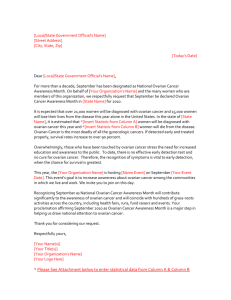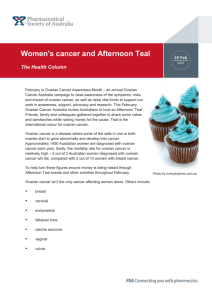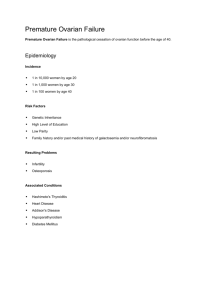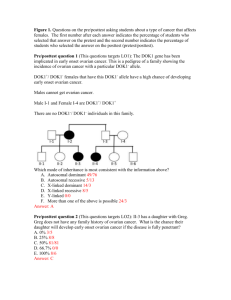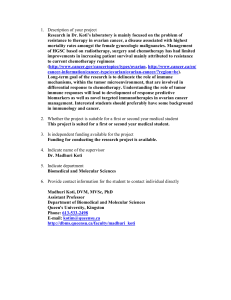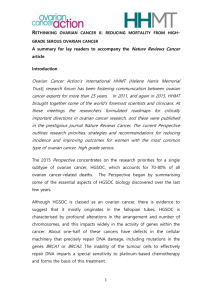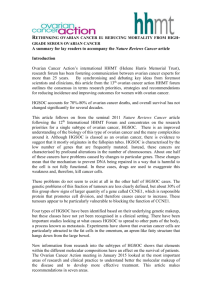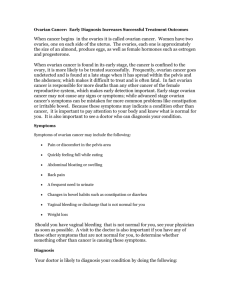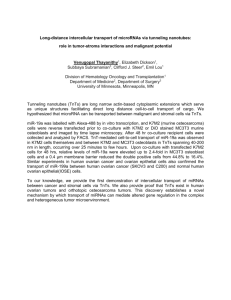Ovarian Cancer National Alliance Response to Food and Drug A
advertisement
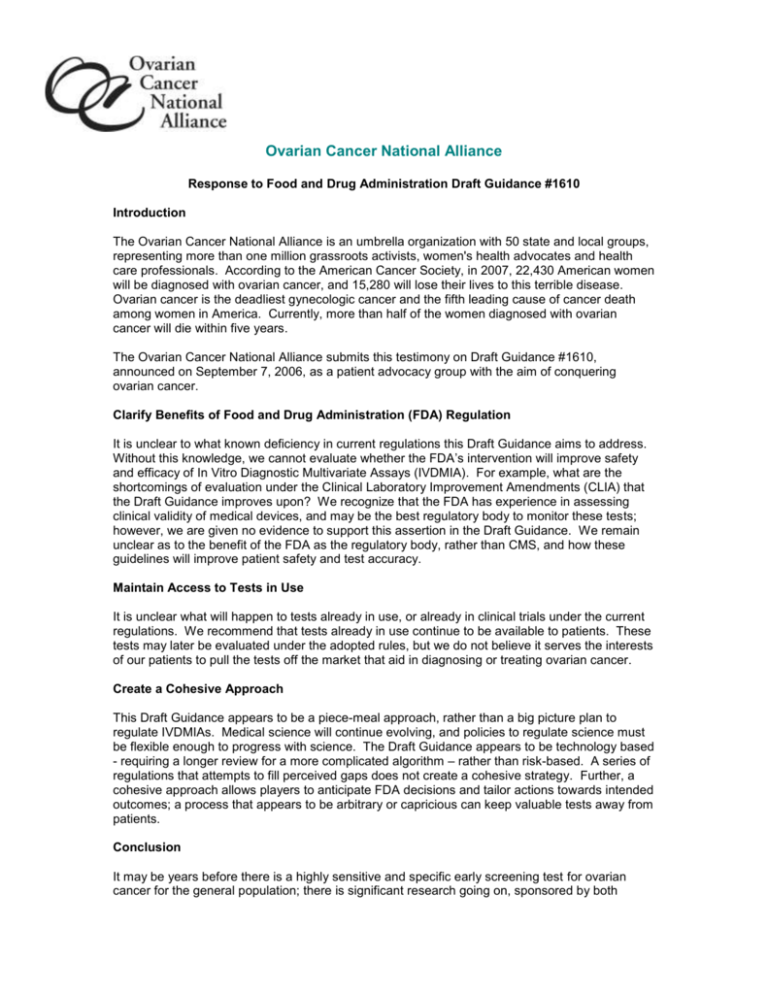
Ovarian Cancer National Alliance Response to Food and Drug Administration Draft Guidance #1610 Introduction The Ovarian Cancer National Alliance is an umbrella organization with 50 state and local groups, representing more than one million grassroots activists, women's health advocates and health care professionals. According to the American Cancer Society, in 2007, 22,430 American women will be diagnosed with ovarian cancer, and 15,280 will lose their lives to this terrible disease. Ovarian cancer is the deadliest gynecologic cancer and the fifth leading cause of cancer death among women in America. Currently, more than half of the women diagnosed with ovarian cancer will die within five years. The Ovarian Cancer National Alliance submits this testimony on Draft Guidance #1610, announced on September 7, 2006, as a patient advocacy group with the aim of conquering ovarian cancer. Clarify Benefits of Food and Drug Administration (FDA) Regulation It is unclear to what known deficiency in current regulations this Draft Guidance aims to address. Without this knowledge, we cannot evaluate whether the FDA’s intervention will improve safety and efficacy of In Vitro Diagnostic Multivariate Assays (IVDMIA). For example, what are the shortcomings of evaluation under the Clinical Laboratory Improvement Amendments (CLIA) that the Draft Guidance improves upon? We recognize that the FDA has experience in assessing clinical validity of medical devices, and may be the best regulatory body to monitor these tests; however, we are given no evidence to support this assertion in the Draft Guidance. We remain unclear as to the benefit of the FDA as the regulatory body, rather than CMS, and how these guidelines will improve patient safety and test accuracy. Maintain Access to Tests in Use It is unclear what will happen to tests already in use, or already in clinical trials under the current regulations. We recommend that tests already in use continue to be available to patients. These tests may later be evaluated under the adopted rules, but we do not believe it serves the interests of our patients to pull the tests off the market that aid in diagnosing or treating ovarian cancer. Create a Cohesive Approach This Draft Guidance appears to be a piece-meal approach, rather than a big picture plan to regulate IVDMIAs. Medical science will continue evolving, and policies to regulate science must be flexible enough to progress with science. The Draft Guidance appears to be technology based - requiring a longer review for a more complicated algorithm – rather than risk-based. A series of regulations that attempts to fill perceived gaps does not create a cohesive strategy. Further, a cohesive approach allows players to anticipate FDA decisions and tailor actions towards intended outcomes; a process that appears to be arbitrary or capricious can keep valuable tests away from patients. Conclusion It may be years before there is a highly sensitive and specific early screening test for ovarian cancer for the general population; there is significant research going on, sponsored by both government and industry to develop effective tests using multiple markers. These tests will be used initially to more accurately diagnose women with existing suspicious pelvic masses to assess whether surgery is necessary. Indications are that effective and reliable diagnostic tests may be available much sooner than a few years. We recognize that these screening and diagnostic tests must be regulated to ensure patient safety and we applaud the FDA’s concern to assure safety and efficacy. However, the regulation should encourage companies to develop tests, and to predict the system of approval. It is of the utmost importance that safe reliable screening and diagnostic tests are widely available. We urge the FDA to resolve this by creating a clear, predictable process with remedies. The process must allow rapid access to diagnostic or screening tests as well as increase safety and efficacy. Such a process will encourage entry and research into tools that will increase survivorship. Already, ovarian cancer is a “rare disease,” not always at the forefront of medical research. Further discouragement into the ovarian cancer area will have great consequences for the lives of women and everyone around them. The process required by the FDA must be clear, predictable and speedy: many lives depend on it. We thank you for the opportunity to submit these comments.


